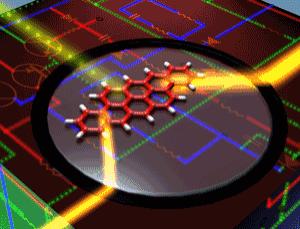
Hence there is no wonder in the fact that researchers pay significant interest in developing an optical transistor that could make the electronic devices out of date.
But the problem is that, Optical Transistors must have a number of properties so that they can be connected together in a way that can process information. Various groups have build optical switches but nobody has succeeded in making optical transistors that could do all and can also be made out of silicon.
For example, the output of optical transistors could be capable of driving other transistors so that logic signals can propagate (known as ‘fanout’). This requires significant gain, the output must preserve the same frequency as input and they must preserve the quality of transmission such that errors should not propagate etc…
Leo Varghese and Co at Purdue University in Indiana said that they have build an optical transistor that can make significant step in this direction.
The optical transistor consists of a micro-ring resonator next to an optical line. Micro-ring resonators are versatile wavelength selective elements that can be used to synthesize a wide class of filter functions. The light supply enters the optical line, passes through it and then outputs. But at a specific resonant frequency the light interacts with micro-ring resonator and vastly reduces the output. The output is off in this stage even though the supply is on. They use another optical line called ‘gate’ to heat micro-ring thereby changing the size, resonant frequency and the ability to interact with the output. This allows us to turn output ON and OFF through gate.
The interaction of micro-ring with gate is more stronger than that with output, this is significant because it means a small gate signal can be used to control larger output signals. Varghese and Co says that the ratio of gate signal to supply is about 6dB, which allows to power at least two other transistors, satisfies the required fan out property an optical transistor. They have even build an a device out of silicon capable of handling data rates up to 10Ghz
The biggest problem of these devices are power consumption. In ordinary electronic transistors, much of the power consumption causes due to charging the lines connection them to operating voltages. In theoretical point of view optical transistors could be more efficient as it doesn’t need charging. But in practice, the lasers which use to power optical transistors are less efficient, it requires comparatively much more energy. For this reason it is not clear that Optical Transistors can match the efficiency of Electronic Transistors.
We can hope that in future Photonics will replace Electronics……….